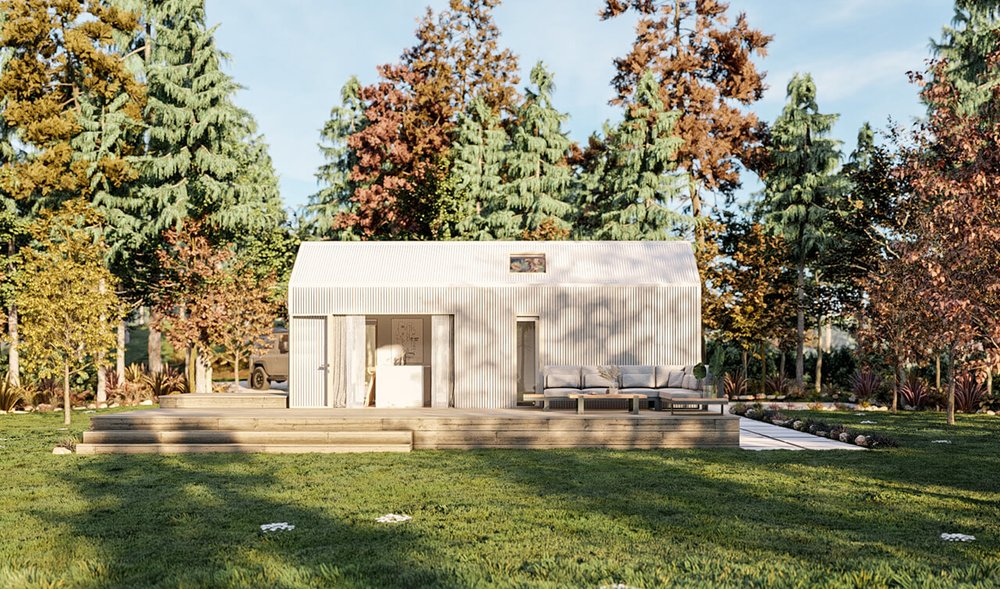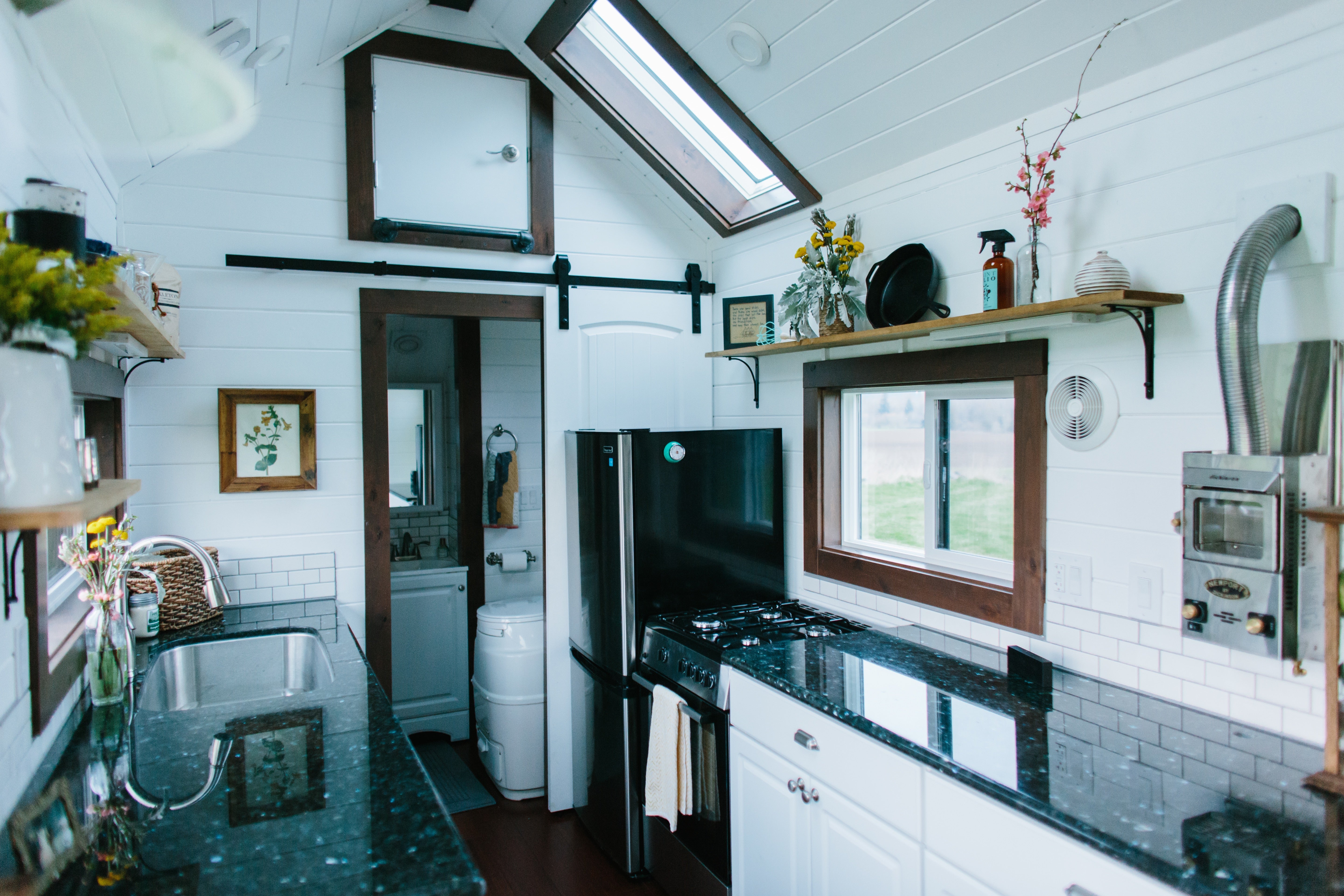Discover the Freedom of Tiny Home Living
Imagine unlocking a world where simplicity meets style, as tiny home living provides a dynamic lifestyle that's both freeing and enriching. As you delve into Tiny home construction plans, you'll find a myriad of options tailored to your aspirations, from compact spaces nestled in nature to urban setups that harmonize with city life. Each tiny home design idea encourages creativity, allowing you to express individuality while maximizing every nook and cranny. Affordable tiny homes offer financial freedom, empowering you to make sustainable choices without the burden of traditional housing costs. From crafting tiny house interior designs that reflect personal flair to selecting the best tiny house kits for DIY enthusiasts, the possibilities are as limitless as your imagination. Whether exploring a tiny house on wheels plans or fixed foundations, each blueprint aids in bringing your vision to life. Embracing the freedom of tiny house living invites you to redefine what home means, presenting opportunities to connect with surroundings and savor life's simple pleasures.

Advantages of Downsizing to Tiny Homes
Downsizing to tiny homes offers an opportunity to simplify life, cutting out excess space and reducing clutter. In a world where bigger often seems better, Tiny house living shifts the focus to creating meaningful experiences over accumulating possessions. With tiny home construction plans, you can select flexible designs that suit your lifestyle, ensuring that every inch of space is purposefully utilized.
You can experience significant cost savings by opting for affordable tiny homes. Not only do you save on initial construction or purchase costs, but also on utilities and maintenance. For example, choosing the best tiny house kits can streamline the building process and reduce expenses, allowing you to allocate resources to other priorities. Over time, the savings amplify, offering more financial freedom.
Embracing tiny home designs means saying goodbye to high utility bills. The energy-efficient nature of tiny houses encourages a more sustainable lifestyle, using less energy for heating, cooling, and lighting. With efficient tiny house interior designs, you'll learn how to make the most of natural light and insulation, offering a comfortable living environment year-round.
The versatility of tiny house design ideas nurtures a lifestyle of flexibility and mobility. Whether rooted in one spot or equipped with tiny house on wheels plans, a tiny home can adapt to various life phases. Tiny home blueprints are often customized, providing the freedom to move, explore new locations, and enjoy diverse surroundings without sacrifice.
Social connectedness and stronger community ties can grow out of tiny house living. With less emphasis on material possessions, you can focus on meaningful interactions with neighbors and friends. As you understand how to build a tiny house, connections with likeminded individuals arise, helping to foster a sense of belonging and support within the growing tiny home community.

Essential Features of a Tiny Home Floor Plan
A well-planned tiny home floor plan seamlessly integrates functionality with style. Maximizing every square inch is crucial, ensuring spaces serve multiple purposes. Innovative tiny house design ideas often incorporate lofted sleeping areas or compact kitchens with smart storage solutions, enhancing usability. Efficient layouts prioritize open areas to maintain a sense of spaciousness while ensuring that essential amenities fit comfortably.
Key features of a robust tiny home design include multipurpose living spaces, such as a living area that converts into a workspace or dining area. Thoughtful placement of windows can enhance natural lighting, reducing energy consumption. Reflective of tiny house living, these plans embrace minimalism without sacrificing comfort or aesthetics, providing a harmonious balance between coziness and efficiency.
Consider the story of Heather and Dave, who achieved their dream lifestyle with an intelligently designed tiny home. Using tiny home blueprints that included integrated storage units and flexible living areas, they managed to create a cozy, stylish space. Their approach to Tiny house interior designs allowed them to live abundantly with fewer belongings, showcasing the possibilities within such a minimal footprint.
Quality tiny home construction plans often feature energy-efficient appliances and materials designed to reduce environmental impact. These layouts also make provision for mobility, with tiny house on wheels plans enabling owners to explore new locales. By focusing on essential features, you can ensure that your tiny home meets your lifestyle needs while promoting sustainability.

Creative Space Solutions for Tiny Homes
Creative space solutions in tiny homes focus on optimizing every part of your living environment. With well-thought-out tiny house interior designs, furniture becomes dual-purpose, such as sofas transforming into beds or staircases doubling as storage compartments. These clever adjustments ensure that your compact home remains functional without feeling cramped, facilitating a seamless tiny house living experience.
Multifunctional areas are vital, allowing you to adapt spaces to various needs throughout the day. For instance, a dining table that folds away when not in use frees up valuable room for other activities. By approaching tiny home designs with a focus on flexibility, you can craft an adaptable living area that grows with you and supports a wide range of uses.
Looking at space planning through the lens of vertical design opens new possibilities for tiny homes. By utilizing walls and vertical storage units, you can significantly increase available space without expanding your home's footprint. This perspective ensures that even small areas remain organized and clutter-free, enhancing your dwelling's overall feel and functionality.
Building on tiny home blueprints often includes integrating discreet storage solutions that blend seamlessly into the decor. Concealed cabinets and hidden shelves add to the aesthetic while providing ample space for personal items. By incorporating these creative approaches into your tiny house construction plans, your home can maintain an uncluttered look, ultimately enriching the quality of your compact living experience.

Tiny Home Layouts and Building Materials
Tiny home layouts are designed to harmonize functionality with limited space. Thoughtfully crafted tiny home blueprints allow for open living areas that seamlessly combine cooking, dining, and relaxation zones. Tracing its evolution from early minimalistic abodes to modern designs, the concept has embraced innovation to offer more livable and adaptable spaces. By incorporating sliding walls or retractable furniture, you can easily reconfigure your home to accommodate changing needs.
The choice of building materials plays a pivotal role in the structure and sustainability of tiny homes. Utilizing lightweight yet durable materials such as steel frames or reclaimed wood ensures structural integrity while minimizing environmental impact. As you plan How to build a tiny house, consider sustainable options like bamboo flooring or solar panels. Tiny home designs can reflect eco-friendly ideals without compromising on style or comfort, creating a balanced approach to modern-day living. Whether you opt for stationary structures or tiny house on wheels plans, materials guide both durability and aesthetic, encapsulating a commitment to simplicity and environmental consciousness.

Legal Considerations for Tiny Homes
Navigating the legal landscape for tiny homes is an essential aspect of planning your new lifestyle. Zoning laws and building codes vary widely by location, influencing decisions on everything from your chosen tiny house interior designs to tiny home blueprints. Engaging with local officials and understanding regulations can be crucial steps before beginning construction. Be sure to research your area's specific requirements as you embark on this journey.
For those considering tiny house on wheels plans, registration with transportation authorities and compliance with road safety standards might be necessary. Insurance is another critical factor in protecting your investment and ensuring peace of mind. By integrating these legal considerations early in your planning, you can streamline the transition into tiny house living and avoid possible setbacks.
Looking ahead, the legal outlook for tiny homes is expected to evolve in several ways as their popularity increases. More flexible zoning regulations could emerge, making it easier to place tiny homes in diverse settings. Communities embracing tiny home living may also advocate for dedicated spaces or neighborhoods designed to support this sustainable living model. By staying informed of developments and actively participating in discussions, you can be part of shaping a more accommodating future for tiny home enthusiasts.

Customizing Tiny Homes to Fit Personal Styles
Customizing tiny homes to fit personal styles transforms modest spaces into unique reflections of personality and lifestyle. With endless Tiny house design ideas, you can select layouts and decor that resonate personally, from rustic retreats to sleek modern abodes. Tailoring tiny house interior designs allows for the integration of cherished items, favorite colors, and style elements that make the space distinctly yours.
To truly understand the potential of customizing tiny homes, you need to shift your mindset from thinking about traditional living spaces to embracing creative layouts and multifunctional furniture. This new perspective opens up possibilities for innovative storage solutions and the use of vibrant accents to infuse character into every corner. By thinking outside the box, you empower yourself to transform constraints into opportunities.
Exploring tiny home blueprints can guide you in selecting structural changes that align with your vision. Whether building from scratch with the best tiny house kits or renovating an existing space, you can adapt these plans to enhance both form and function. As you learn how to build a tiny house tailored to your lifestyle, each design choice contributes to a cohesive, personalized living environment that is both functional and comforting.






Share: